Erasing to Reshape Paths
Instead
of selecting and deleting individual anchor points to reshape a path,
you can use the Eraser tool on the Tools panel to delete parts of a
path. When you use the Eraser tool to remove parts of a closed path,
InDesign creates an open path. If you remove parts of an open path,
InDesign creates two separate open paths. When you erase inside of a
filled path, InDesign creates a compound path. This is useful when you
want to simplify a complex drawing or remove a background.
Erase Parts of Paths
 Select the objects that you want to reshape with the Eraser tool.
Select the objects that you want to reshape with the Eraser tool.
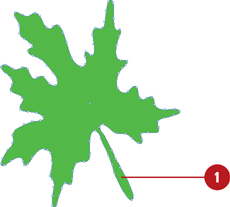
 Select the Eraser tool on the Tools panel.
Select the Eraser tool on the Tools panel.

 Drag across the parts of the object that you want to erase.
Drag across the parts of the object that you want to erase.
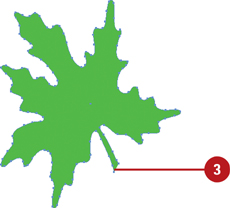
The remaining parts of the path reconnect to close the path.
Working with Pathfinder
If
you have overlapping objects, you can use buttons on the Pathfinder
panel to create compound shapes, which are editable and releasable
(restoring original attributes). You can use Pathfinder buttons (Add,
Subtract, Intersect, Exclude Overlap, or Minus Back) on almost any
object, except placed or rasterized images, mesh objects, or a single
group.
Apply a Pathfinder Command
 Select two or more overlapping objects.
Select two or more overlapping objects.
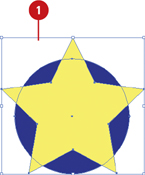
 Select the Pathfinder panel.
Select the Pathfinder panel.
- Click the Window menu, point to Object & Layout, and then click Pathfinder.
 Select from the following Pathfinder buttons:
Select from the following Pathfinder buttons:
- Add. Use to join the outer edges of selected objects into a compound shape.
- Subtract. Use to remove objects in front of other objects and still preserve paint attributes.
- Intersect. Use to preserve object areas that intersect.
- Exclude Overlap. Use to change overlapping areas to transparency.
- Minus Back. Use to remove objects in the back, leaving only part of the frontmost object.
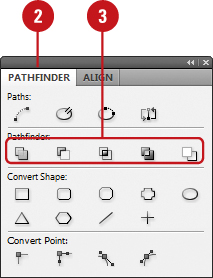
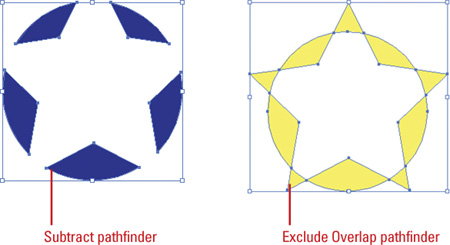
You can release a compound shape to restore object attributes.
Select the Selection tool on the Tools panel, select the compound
shape, click the Object menu, point to Paths, and then click Release
Compound Path.